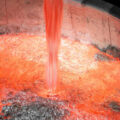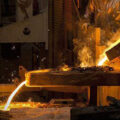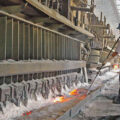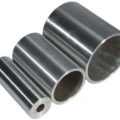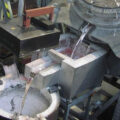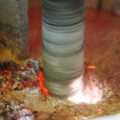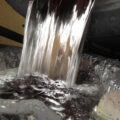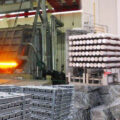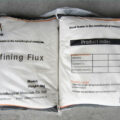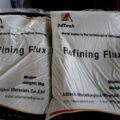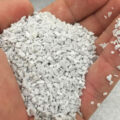The metallic element aluminum is the third most plentiful element in the earth’s crust, comprising 8% of the planet’s soil and rocks (oxygen and silicon make up 47% and 28%, respectively). In nature, aluminum is found only in chemical compounds with other elements such as sulphur, silicon, and oxygen. Pure, metallic aluminum can be economically produced only from aluminum oxide ore. The Primary Aluminium Production and Purification Process is important for aluminum products.
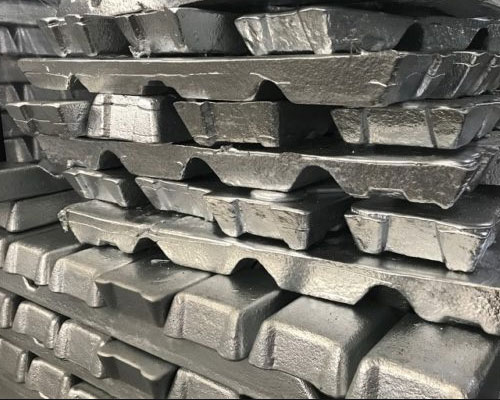
Alumina Production
Pure aluminium oxide, called alumina, is extracted from bauxite via a process called refining, composed of two steps: a digestion process, using caustic soda, which allows the separation of aluminium hydroxide from the so-called “bauxite residue”, followed by a calcination step which removes the water content in the hydroxide.
Primary Aluminium Production
Molten aluminium is extracted from the alumina through an electrolytic process called smelting, which breaks the strong chemical bond of the aluminium and oxygen atoms using a powerful electric current. Once the liquid metal is collected it is transferred in the casthouse, where it is purified, alloyed to specification and then cast into ingots.
Primary Aluminium Purification Process
AdTech offers online degassing unit, CFF filtering unit, fluxes for effecting the purification of molten aluminum or aluminum alloys by the removal of gaseous impurities. These impurities include hydrogen, solid impurities, metal oxides and other compounds, from the molten metal. The process is characterized by the use of non-toxic material and by the practical elimination of substantial reduction in the discharge of potentially harmful gases and fumes into the atmosphere. AdTech molten aluminum purifying units can readily be carried out in existing metal melting and casting installations, and which can be utilized economically. The fluxes are developed by AdTech, which is used for degassing and slagging of molten metal during aluminum alloy casting. AdTech’s refining agent uses a unique technology to enhance the effect of traditional degassing and slag removal in the molten metal. It is used in the casting and rolling of multiple series of aluminum alloy products.
Metallic aluminum has many properties that make it useful in a wide range of applications. It is lightweight, strong, nonmagnetic, and nontoxic. It conducts heat and electricity and reflects heat and light. It is strong but easily workable, and it retains its strength under extreme cold without becoming brittle. The surface of aluminum quickly oxidizes to form an invisible barrier to corrosion. Furthermore, aluminum can easily and economically be recycled into new products.

